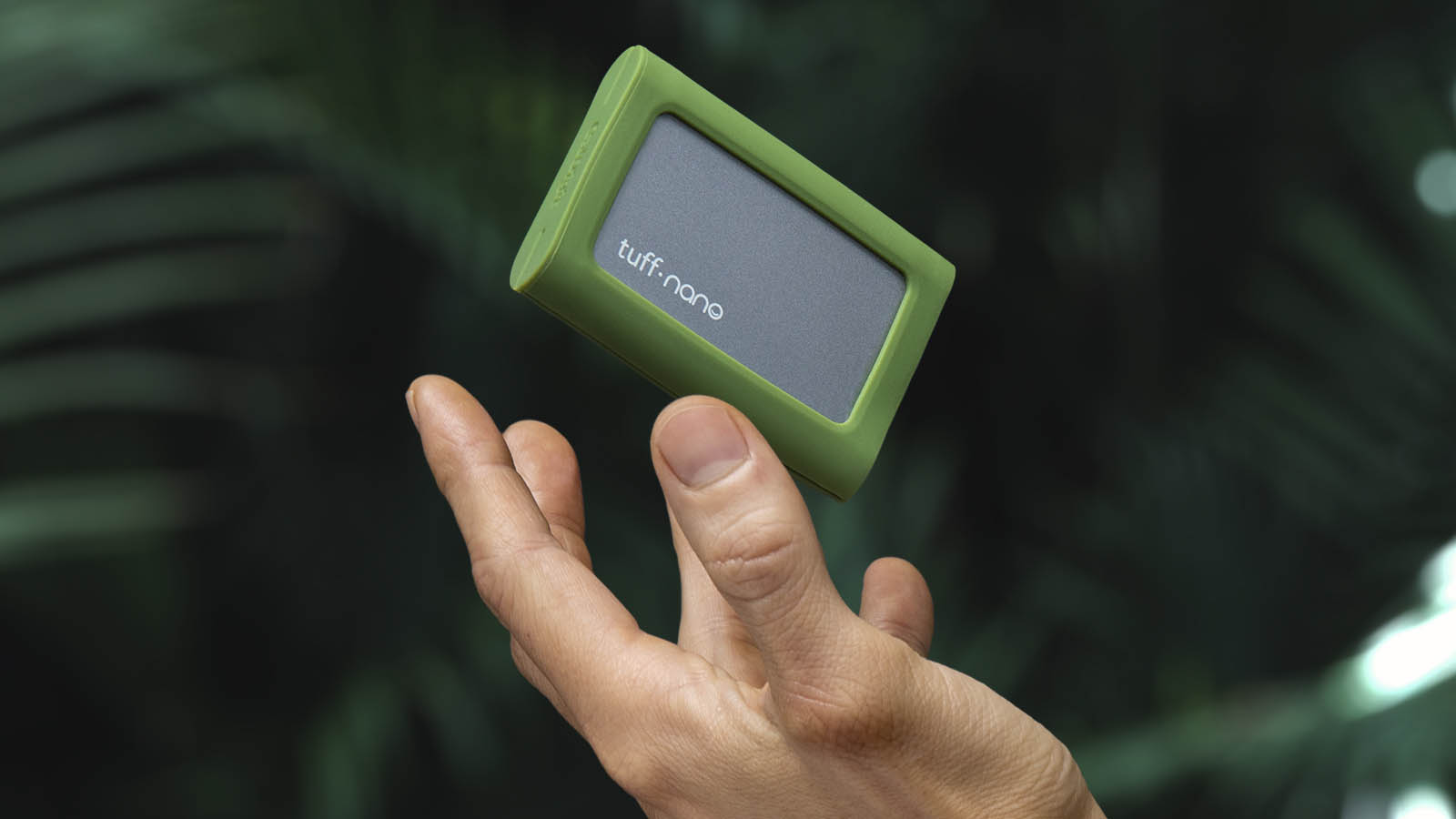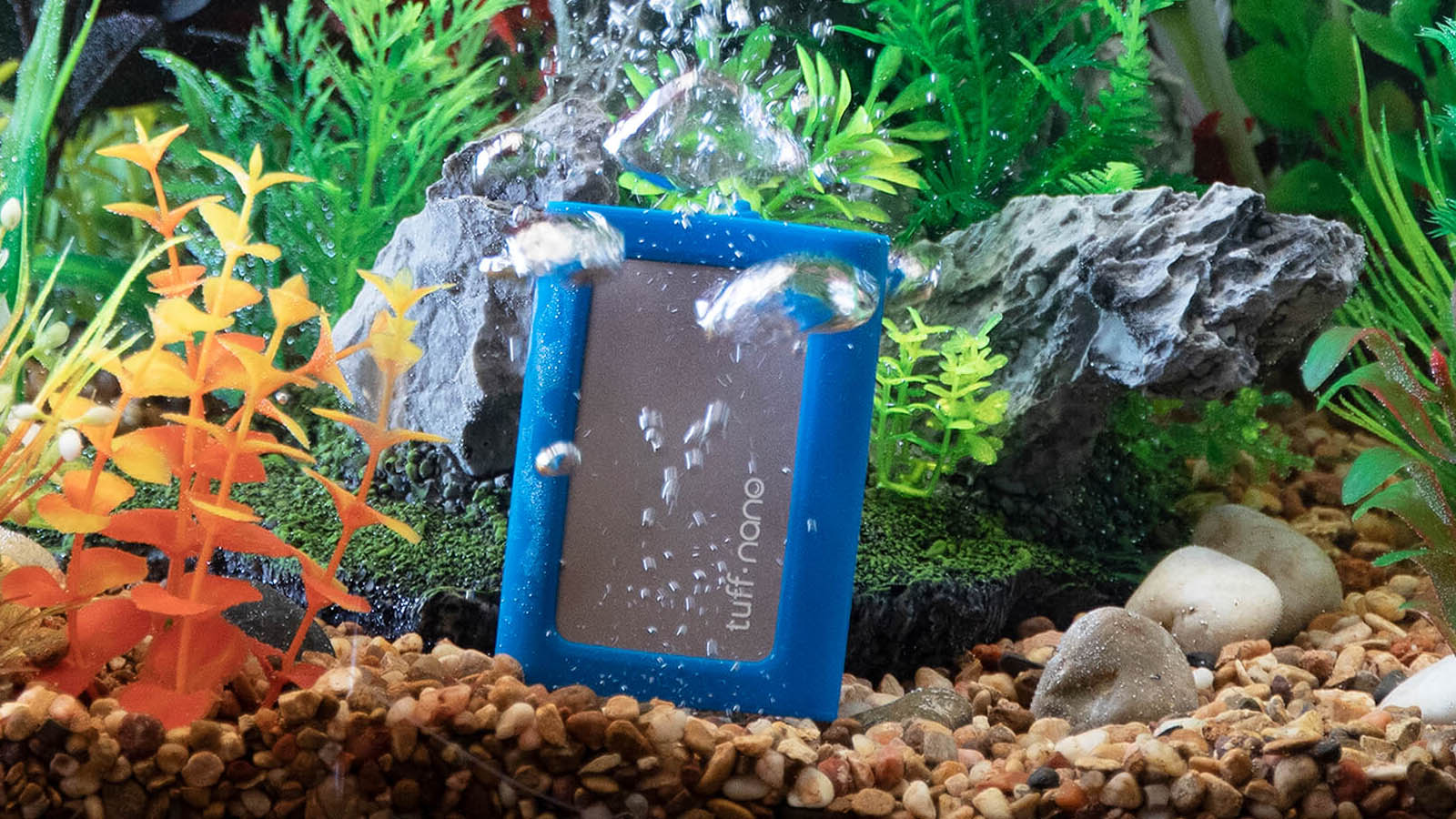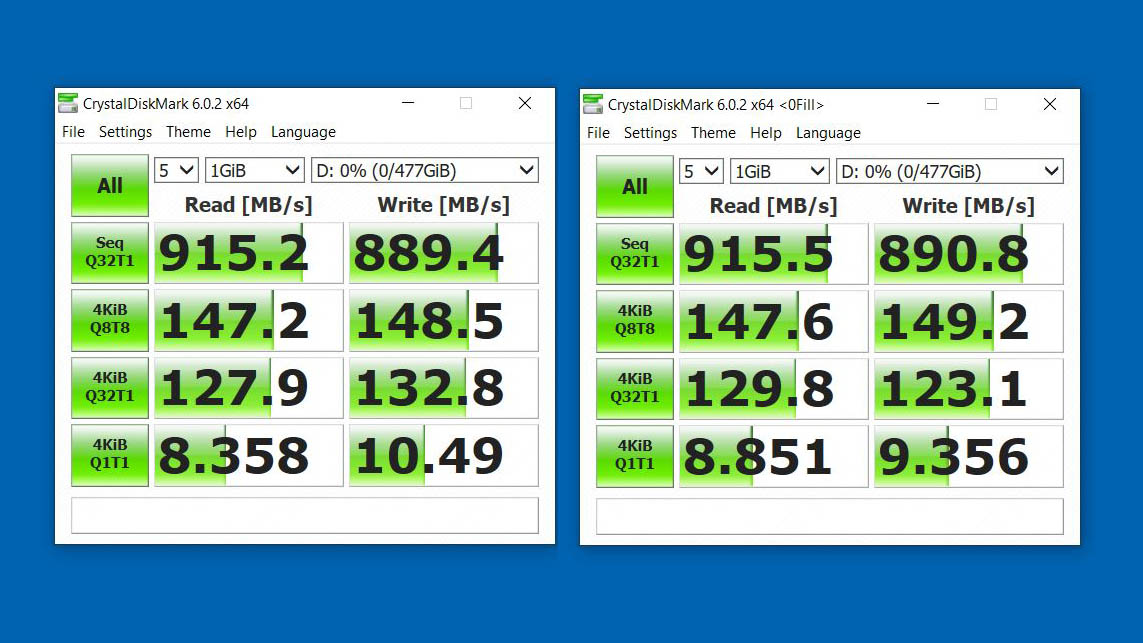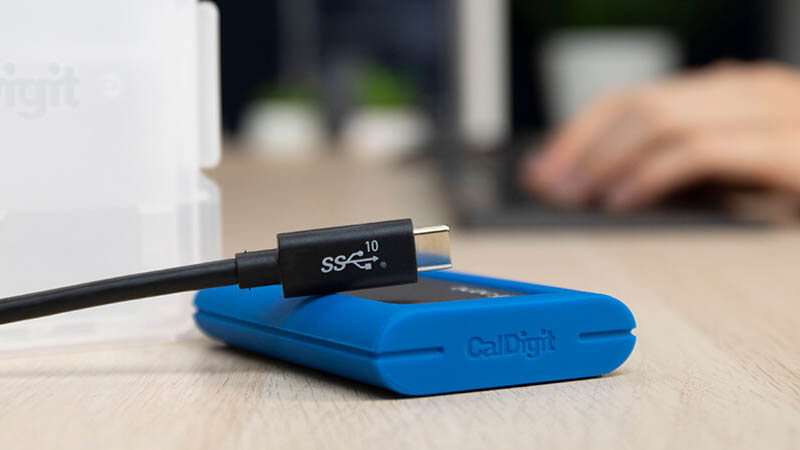TechRadar Verdict
The Tuff Nano offers great performance in a highly functional package at a reasonable price. Our only disappointment is that CalDigit only offers a 2-year warranty, hinting that there are limits to the abuse it can take.
Pros
- +
Pocketable
- +
Included carry box
- +
Decent performance
Cons
- -
IP67 rating can be situational
- -
Only a 2-year warranty
- -
Only 500GB capacity
Why you can trust TechRadar
With the advent of solid-state storage, designers are no longer bound by the physical scale of convention hard drives. They can make their devices much smaller, more robust and dramatically quicker.
CalDigit is a hardware maker, designer and retailer of Thunderbolt and USB-C technology docking stations and storage solutions. It already offers a robust external storage device called the Tuff, that it has followed now with the diminutive Tuff Nano.
With NVMe storage technology inside and an abuse resistance casing outside, is the Tuff Nano the ideal companion for those that want high-performance storage on the move?
- Also check out the best portable SSD of 2019

Design
Most toughened external drives use a metal tube for critical protection of the delicate electronics inside, and the Tuff Nano follows that trend.
According to CalDigit, if you removed the ends of this enclosure inside you will find a Type-C to M.2 board and mounted on that a Toshiba built NVMe drive and a thermally conductive pad to redistribute heat to the metal tube.
As accessing the screw heads holding the endplates on would involve damaging the drive, we chose to accept the internal description as truth, supported by some studious benchmarking during our examination.
Additional protection is provided to the drive by a removable soft silicone cover that comes in Tomato Red, Royal Blue, Olive Green or Charcoal Black. At just 7.59 cm long, 5.44 cm wide and 1.45 cm thick with the cover installed, the Nano is perfectly named.
That makes it small enough to easily pocket, even stored in the clear plastic box it comes, along with some minor documentation and two short USB cables.
Many drive makers have chosen either a Type-A USB 3.2 connector or Type-C Thunderbolt/USB 3.1 Gen 2 option. CalDigit kindly provides both, with two 25cm cables, avoiding the need for a converter or adapter.
The review Tuff Nano contained 512GB of NAND storage, but a 1TB model is promised.

In use
Here’s how the CalDigit Tuff Nano SSD performed in our benchmark tests:
CrystalDiskMark: 915MBps (read); 890MBps (write)
Atto: 1047MBps (read, 256mb); 1025MBps (write, 256mb)
AS SSD: 912MBps (seq read); 751MBps (seq write)
Caldigit is a fan of Apple it appears, as they chose to format the Nano with a partition layout that only Mac OS understands. Given that the vast majority of computer owners don’t own a Mac, and that there are numerous formats (exFAT for example) that would have worked for both, that choice appears somewhat rash.
Contradicting the notion that all journalists use Macbooks, we were forced to reformat the Nano into NTFS to make it appear as a drive on our PC systems.
A small document entitled ‘Windows Quick Start Guide’ is included in the box and takes you through the process of reformatting. But any user who fails to notice that help will wonder why no drives appear on their Windows PC once the nano is connected.
On the CalDigit website is a video of the Tuff Nano SSD being unceremoniously dumped into a fish tank. As impressive as this might seem, it also serves to underline the limitations that some of the protections on this device have.
We noted that the drive in the video does not have the cable attached, allowing the rubber port cover to be in place, and critically, the fish tank isn’t that deep.
The port cover might not be an issue, as the Type-C port is rated to IPX8. But getting water in a Type-C cable that carries power might be a greater issue.
To pass the IP67 test a device must be capable of being fully immersed in a metre of water for 30 minutes.
If you always remove the cable when not in use and replace the cover, and that the water is not deeper than a metre, that the water is fresh. And, you can find and extract it in under 30 minutes, then all should be fine.
Should it be deeper than water is likely to get inside since it doesn’t float, or if you didn’t put the port cover back, or you can find it quickly on a muddy river bottom.
IP67 sounds wonderful in theory until you think back to the last time you lost something in the water and realise that having this protection might not help.
Probably of more practical help is that this spec should keep dust out of the device for at least 8 hours, although as it has no moving parts unless the contaminant dust conducted electricity this won’t have the same potential for damage as water.
We’d contest that the best protection the Nano has is the hard-plastic carry box that CalDigit kindly included and the soft silicone case cover. The latter is undoubtedly a factor in the Nano being able to survive a 3-metre drop on to a hard surface.
As portable drives go, this one is reasonably protected, but we’d still avoid getting it wet or dropping it intentionally.
Competition
At the time of writing the Tuff Nano is £159.99 ($149.95) for the 512GB model, irrespective of colour. It’s available throughout the Americas, Europe, Asia, Australia and the Middle East. And, it can be found on Amazon in most regions.
This cost is high when compared with other comparable external SSDs. The Crucial X8 costs a little more but has double the capacity, although isn’t water-resistant.
ADATA makes the IP68 water and dust resistant SD700, offering the same capacity for two thirds the cost of the Nano. But that comparison is balanced by the SD700 only offering half the speed of the Tuff Nano.
While other products will undoubtedly appear soon, at the time the Caldigit Tuff Nano SSD has an almost unique feature set and performance combination that might go some way to justify the price.

Performance
With an NVMe PCIe drive deep inside the Nano and not a SATA SSD, the potential for high performance is good.
But, as with many of these types of devices, the limiting factor is the connection technology available on the computer.
The quoted speed of the Nano is 1055MB/s, with the test system being a MacBook Pro (15-inch, 2018) running Apple macOS 10.15.
That machine has four Thunderbolt 3 ports, and the Nano would be able to connect via USB USB-C Gen 2 mode that this drive uses.
We tried this drive with both Thunderbolt 3 and a USB 3.2 port, and on both, it can read at greater than 900MB/s and write at just under that level. But if you connect it to a standard USB 3.0 (now also called USB 3.1 Gen 1), you will see a much lower level in the 500MB/s range.
This speed reduction isn’t anything wrong with the Tuff Nano. It is merely the bandwidth limitations of the connection.
Therefore, if you want to get all the speed out of this device that it is capable you will need either USB 3.1 Gen 2, USB 3.2 or a Thunderbolt 3 connection.
For those using Type-C connections, the Tuff Nano is compatible with passive Thunderbolt 3 cables and is not compatible with active cables on USB-C Gen 2 devices

Final verdict
There is much to like about the CalDigit Tuff Nano SSD, even if PC owners are forced to reformat it before use.
We admired the compact and robust design, that it came is a useful protective box that stores the two different cables and the stellar performance on Thunderbolt 3.
However, one reservation we have is that CalDigit makes much of its resistance to physical harm and water immersion, but only offers a two-year warranty on it. Where the Crucial X8 we recently reviewed claims less for its protection but still manages a three year warranty period.
Looking at how well constructed the Tuff Nano is, we’re surprised that CalDigit doesn’t have more confidence in its survivability.
The only other issue here is that the 500GB capacity might not be enough for some users, who will be able to find alternative products with 1TB for nearly the same price.
If this much external storage that can out-perform an internal SATA SSD, and handle occasionally getting wet, then the CalDigit Tuff Nano SSD might be perfect for you.
- Looking for more durable drives? These are the best rugged hard drives of 2019
Mark is an expert on 3D printers, drones and phones. He also covers storage, including SSDs, NAS drives and portable hard drives. He started writing in 1986 and has contributed to MicroMart, PC Format, 3D World, among others.

